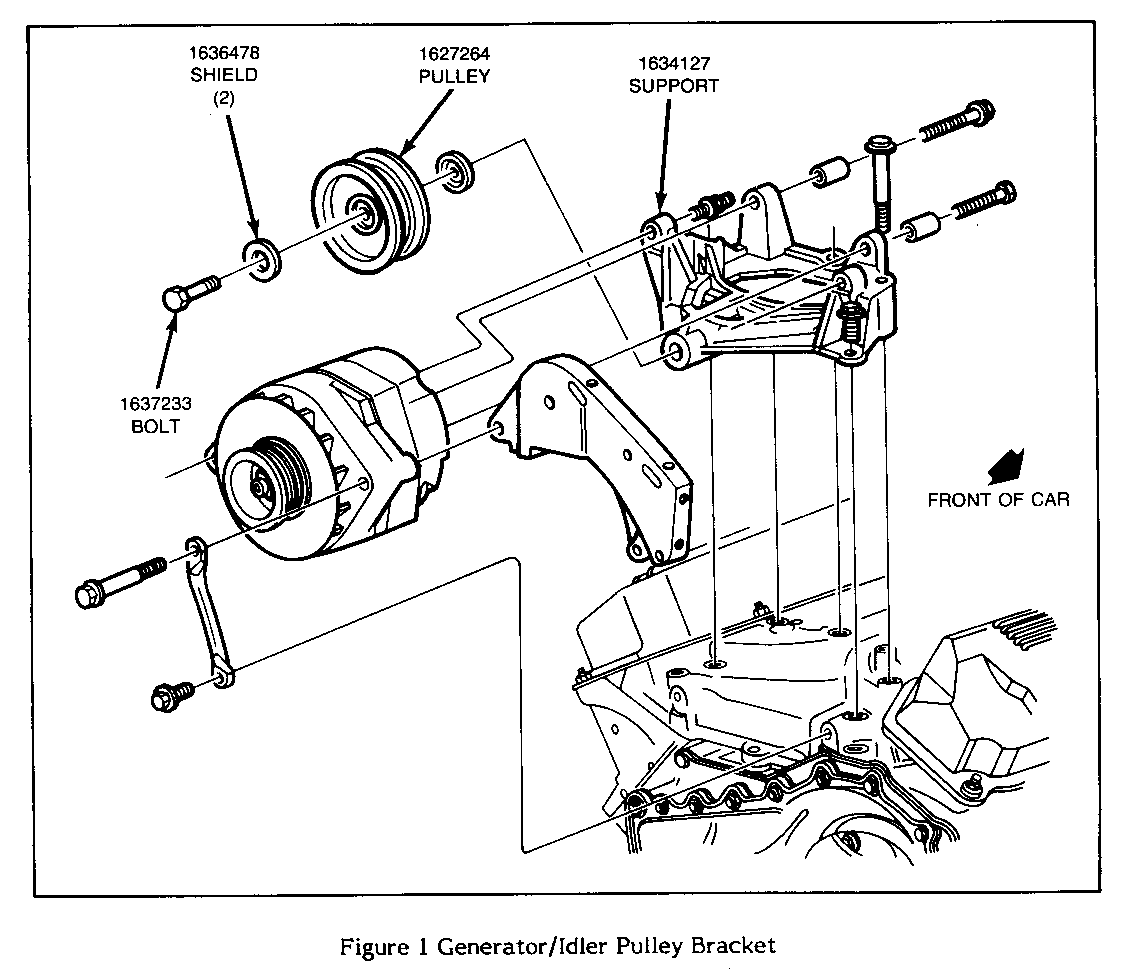NOISE OR PREMATURE BELT WEAR SERPENTINE DRIVE BELT

VEHICLES AFFECTED: ALL WITH TRANSVERSELY MOUNTED HT4100 ENGINES
The serpentine engine accessory drive belt used on transversely mounted HT4100 engines may experience premature belt wear and/or unusual belt noise conditions.
BELT WEAR
Premature drive belt wear is usually caused by pulley misalignment. Service Bulletin 85-6-167 discusses this condition with emphasis on establishing correct idler pulley alignment. Beginning with the following 1986 vehicles (C-332942, E-612388, K-810146) design of the idler pulley and bracket changed to the cast aluminum design shown in Figure 1. Shimming of the pulley bracket as described in Bulletin 85-6-167 should not be required with the cast bracket. Retrofit using the cast aluminum generator/idler pulley bracket can be accomplished by ordering the parts shown in Figure 1 if desired, however, this modification provides no advantages over a properly aligned stamped steel idler pulley bracket. This modification is not possible on 1985 vehicles before 321327 equipped with a 108 AMP generator. The cast bracket is designed for the 120 AMP generator only. Refer to Service Bulletin 85-6-283 for details of generator changes.
BELT NOISE
Serpentine belt noise is most noticeable at idle. Various other drive system components (tensioner, A/C compressor, generator) may appear to be the cause of the noise which is the result of the belt. A new design drive belt was recently released for service use only under P/N 1643049 to replace 1625690 for all 1986 and 1987 C,E,K, and V cars and 1986 C cars after 321327 (120 AMP generator). The belt can be easily identified by a six inch orange band on the outside diameter. This belt is not used in production.
Before replacing the belt to resolve a noise condition, inspect all of the pulleys in the accessory drive system for misalignment. This can be accomplished by observing the various pulleys with the engine running. Run-out or wobble will identify pulleys requiring attention. Observe particularly the crankshaft, air pump and water pump pulleys for run-out that may be induced by loose pulley fasteners. Properly aligning the idler pulley as described in Bulletin 85-6-167 may also be indicated.
Once alignment of the belt drive system is confirmed, the service belt should be installed and the noise re-evaluated even if replacement of other components appears to be required. Frequently a belt tensioner which appears excessively "jumpy" can be fixed by belt replacement only. This is also true for belt noise which appears only with the A/C compressor engaged. If belt replacement fails to correct the condition, continue diagnosis of accessory components. Special Tool J-36312 has been developed to aid accessory noise diagnosis by providing a series of belts designed to allow engine operation with each of the belt driven accessories eliminated in turn.

General Motors bulletins are intended for use by professional technicians, not a "do-it-yourselfer". They are written to inform those technicians of conditions that may occur on some vehicles, or to provide information that could assist in the proper service of a vehicle. Properly trained technicians have the equipment, tools, safety instructions and know-how to do a job properly and safely. If a condition is described, do not assume that the bulletin applies to your vehicle, or that your vehicle will have that condition. See a General Motors dealer servicing your brand of General Motors vehicle for information on whether your vehicle may benefit from the information.
